Balanced Scorecard(BSC) Software
Balanced Scorecard is a management tool that helps organisations improve their performance.
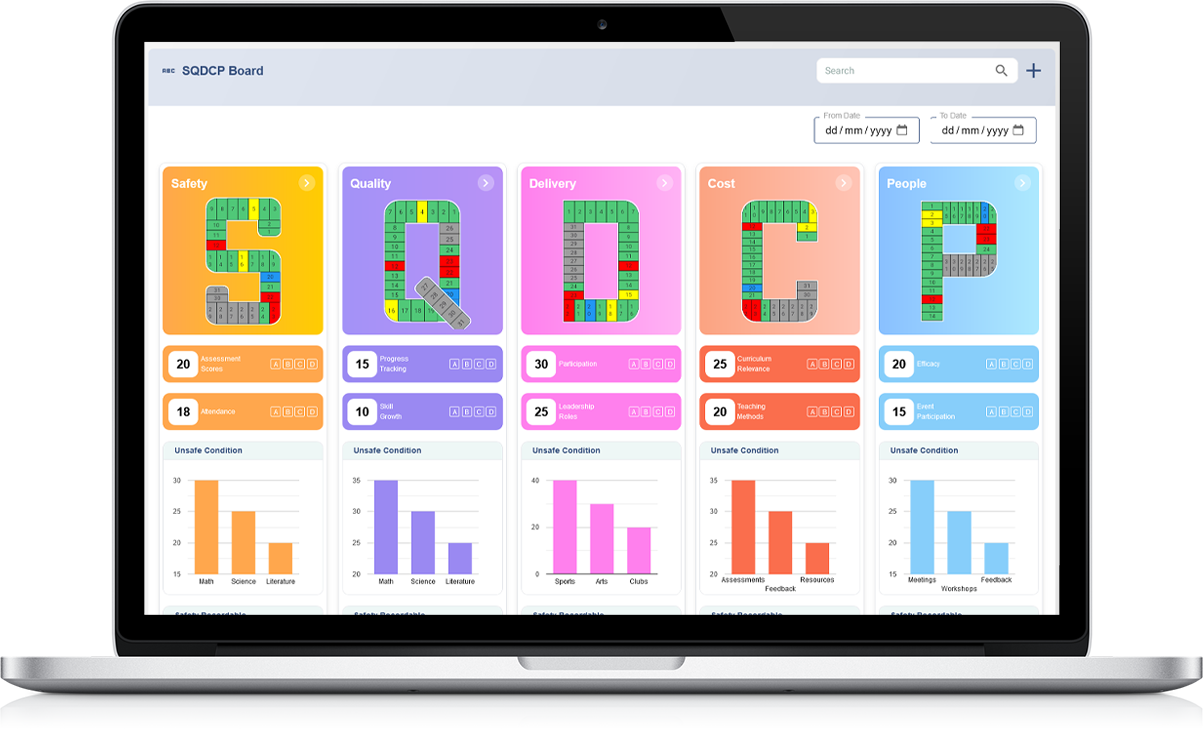
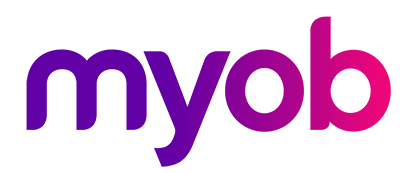





What Is a Balanced Scorecard?
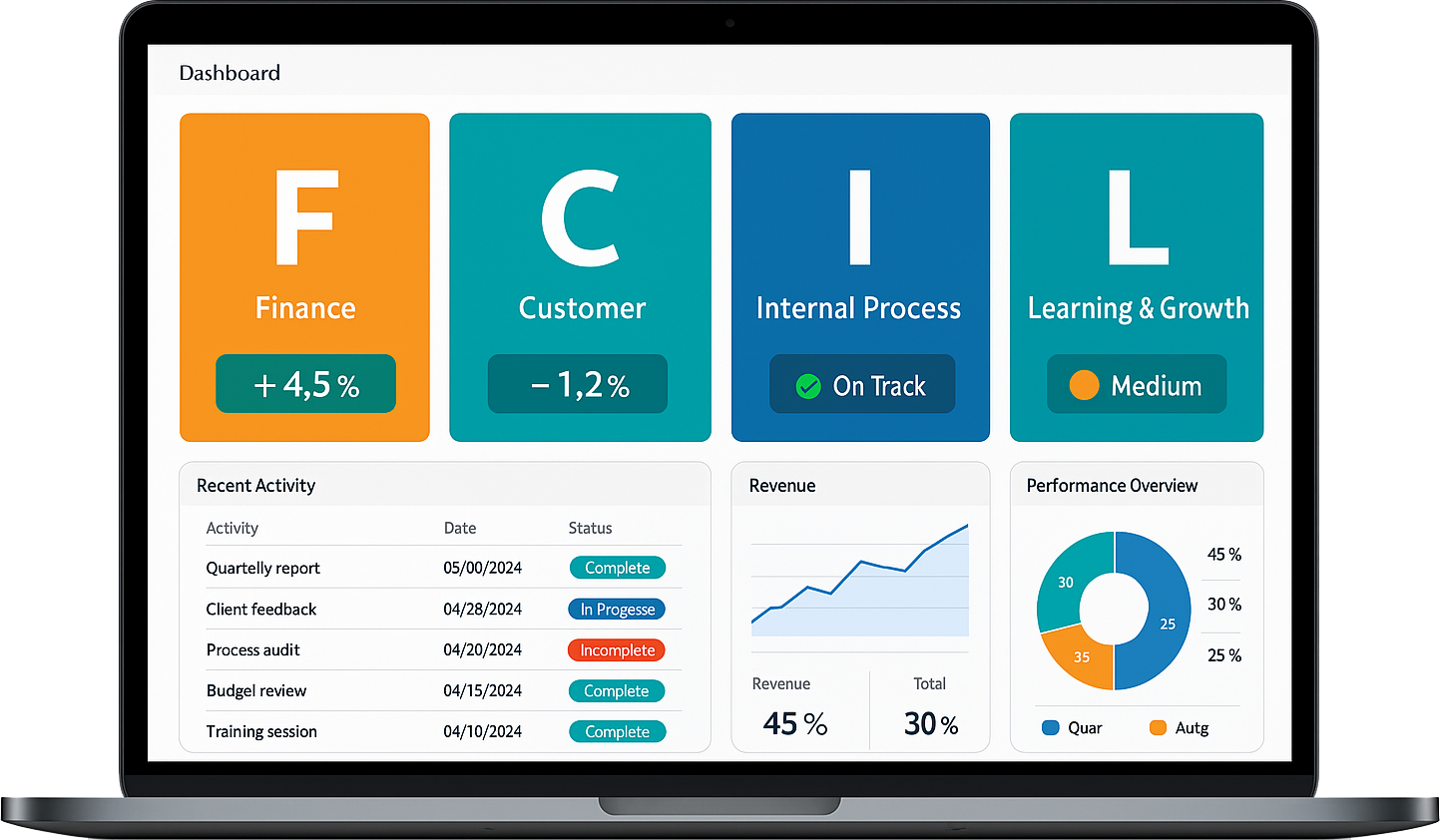
A Balanced Scorecard (BSC) is a comprehensive framework designed to align an organisation’s activities with its strategic goals and vision. It evaluates performance across four interconnected perspectives: financial, customer, internal business processes, and learning and growth. The financial perspective assesses progress toward achieving monetary goals, while the customer perspective focuses on meeting client expectations and improving satisfaction. Internal business processes measure operational efficiency and workflow effectiveness, and learning and growth emphasise innovation, employee development, and the adoption of new technologies.
Why Your Business Needs the Balanced Scorecard
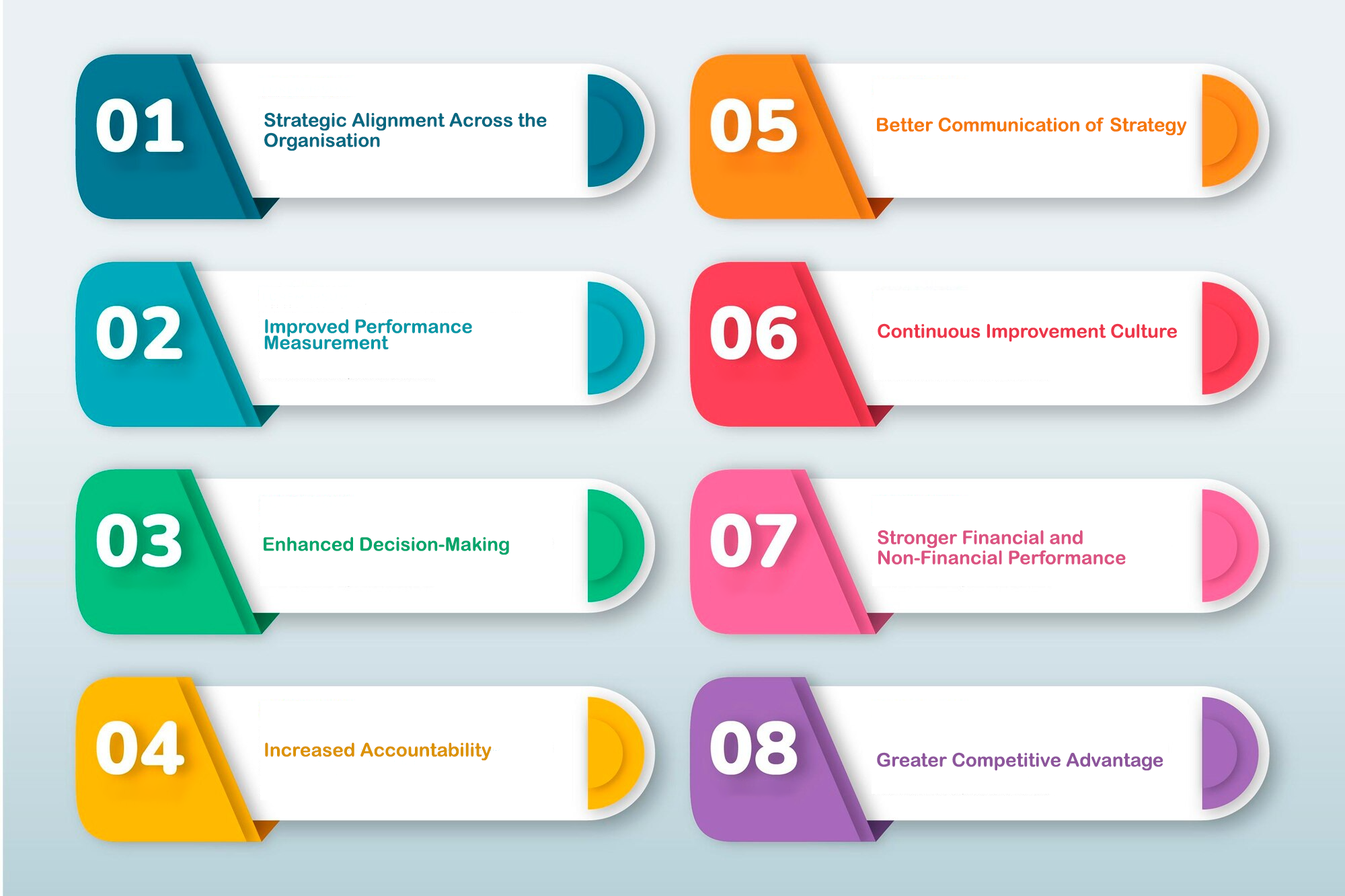
The Balanced Scorecard (BSC) is essential for businesses seeking to align their daily operations with long-term strategic goals. By evaluating performance across financial, customer, internal processes, and learning and growth perspectives, it provides a comprehensive view of organisational success. The BSC promotes data-driven decision-making, enhances accountability, and ensures all teams work toward common objectives.
It identifies areas for improvement, fosters continuous innovation, and supports sustainable growth. With its holistic approach, the BSC helps businesses adapt to changing market conditions while maintaining focus on achieving strategic priorities. It’s a powerful tool for driving efficiency and measurable results.
Perspectives of the Balanced Scorecard (BSC) Framework
The Balanced Scorecard (BSC) framework evaluates organisational performance through four critical perspectives, ensuring a holistic approach to strategic management. The financial perspective focuses on achieving financial objectives by tracking metrics such as revenue growth, profitability, and return on investment. The customer perspective emphasises meeting client needs and enhancing satisfaction through metrics like customer retention, satisfaction rates, and market share. Together, these perspectives address how organisations create value for stakeholders and maintain customer trust.
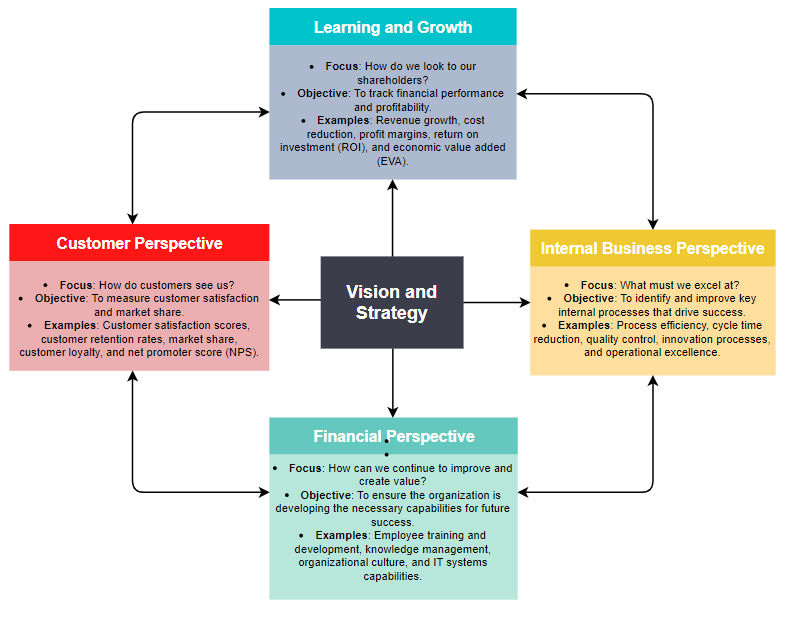
The internal processes perspective measures operational efficiency and workflow quality, ensuring processes align with strategic goals. Metrics include cycle times, production quality, and cost management. Lastly, the learning and growth perspective focuses on innovation, employee development, and technological advancement, tracking training, satisfaction, and readiness for future challenges. By integrating these perspectives, the BSC helps organisations align daily activities with long-term strategies, fostering continuous improvement and sustainable growth.

SQCDP Visual Management Boards
SQCDP Visual Management Boards are dynamic tools designed to track and display key operational metrics across five critical areas: Safety, Quality, Cost, Delivery, and People. These boards provide a centralised and visual representation of performance data, allowing teams to monitor progress, identify challenges, and make informed decisions in real time. By focusing on these core metrics, SQCDP boards help ensure alignment with organisational goals and promote a culture of accountability and continuous improvement.
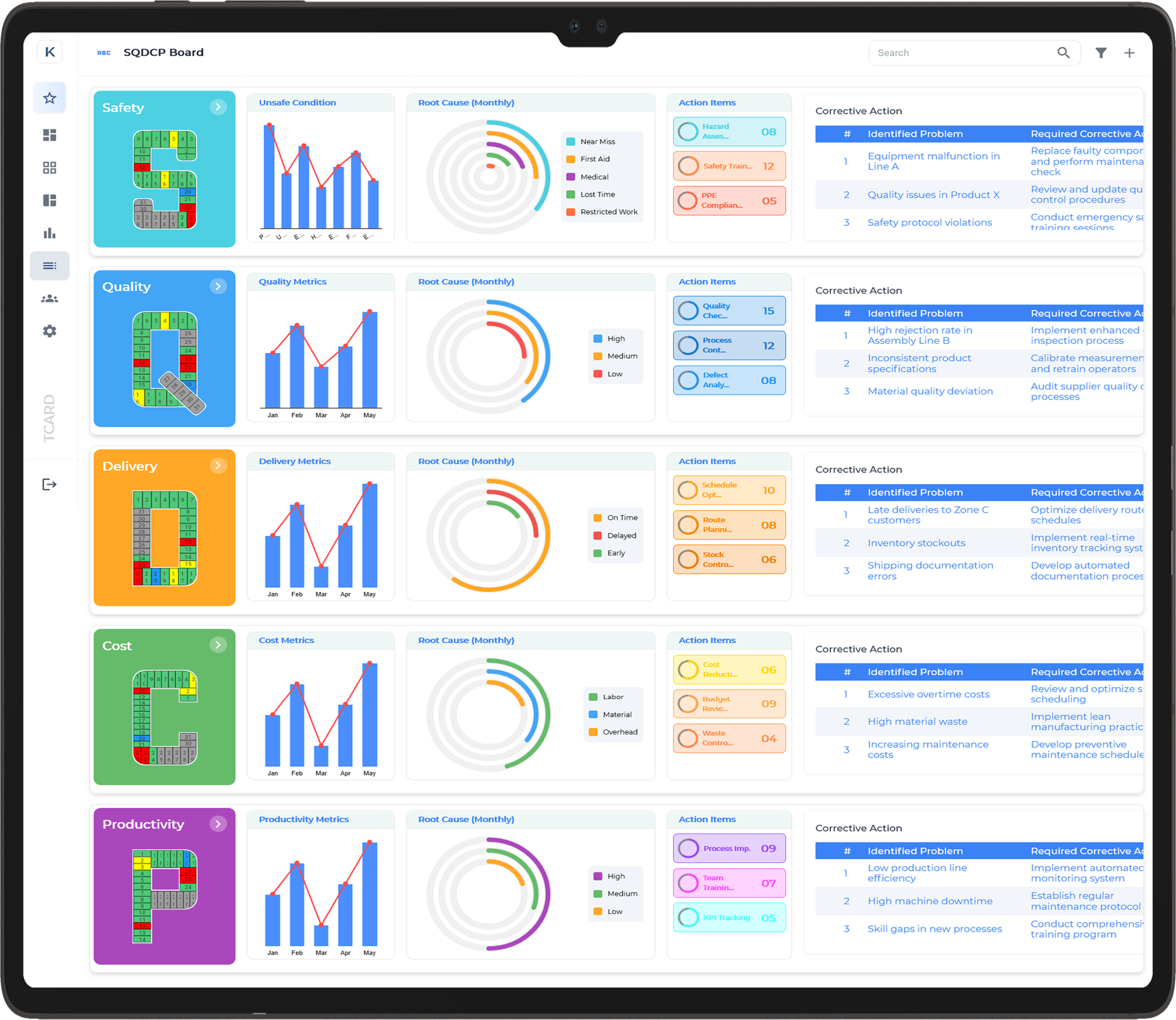
The integration of SQCDP boards enhances communication and collaboration by making performance metrics accessible to all team members. Safety metrics track incidents and compliance, while quality ensures defect-free processes. Cost management highlights budget adherence, and delivery focuses on meeting timelines. The people component emphasises employee engagement and development. Together, these metrics foster operational excellence by enabling teams to address issues promptly, optimise processes, and consistently meet performance objectives.
Action Plan Status: Balanced Scorecard
The Action Plan Status within the Balanced Scorecard (BSC) framework is essential for tracking the progress of strategic initiatives across key performance areas: Financial, Customer, Internal Processes, and Learning and Growth. It provides a clear view of how well the organisation is progressing toward its goals. Each perspective in the BSC has specific action plans that focus on improving performance in that area, such as increasing revenue, enhancing customer satisfaction, or optimising internal processes. By regularly evaluating the status of these plans, businesses can ensure that their activities remain aligned with their strategic objectives.
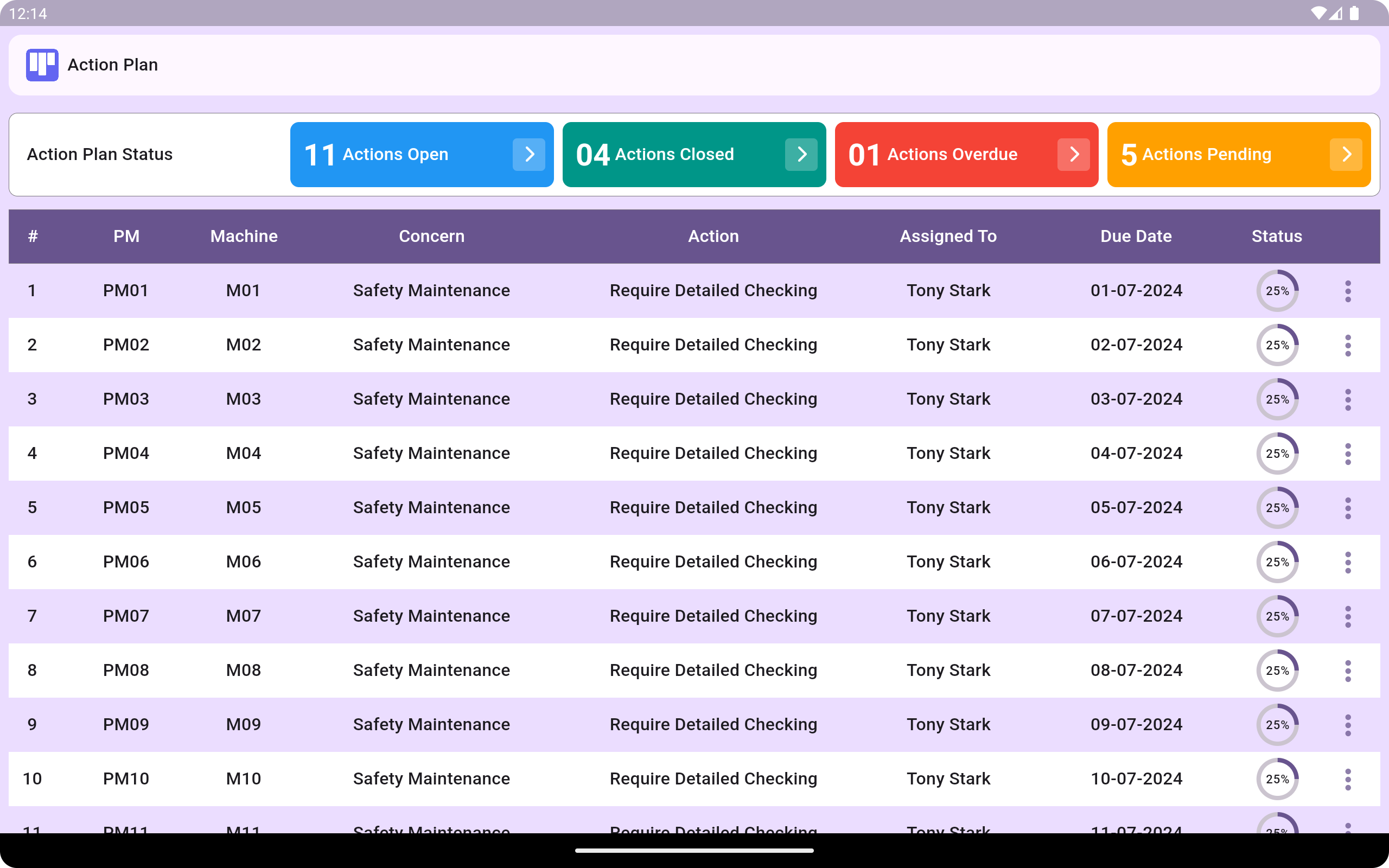
Monitoring the action plan status also helps identify areas that require attention and corrective action. For example, if progress in the internal processes or customer satisfaction is lagging, immediate steps can be taken to address the issue. This ongoing assessment not only ensures accountability but also drives continuous improvement across all areas of the organisation. By using the BSC to track action plan status, companies can stay focused on achieving their strategic vision and making data-driven decisions for sustained success.
What Are Key Performance Indicators (KPIs)?
Key Performance Indicators (KPIs) are measurable values that organisations use to track and evaluate progress toward specific objectives. They serve as benchmarks to assess the effectiveness of strategies, operations, and individual contributions, ensuring alignment with overall business goals.
.png)
KPIs vary across industries and functions. For instance, a sales team may track revenue growth, while a customer service team might focus on satisfaction scores. Effective KPIs are specific, measurable, achievable, relevant, and time-bound (SMART). By regularly monitoring KPIs, businesses can identify areas for improvement, make informed decisions, and drive consistent performance enhancements.
Hoshin Kanri X Matrix for Strategic Planning
The Hoshin Kanri X Matrix is a strategic planning tool that helps organisations align their goals and objectives across all levels, ensuring that everyone in the company is working toward the same priorities. The X Matrix visually maps out the relationship between long-term strategic goals, annual objectives, key initiatives, and performance measures. It is structured in a grid format, where the long-term goals are placed in the top row, annual objectives in the middle, and key initiatives with corresponding performance metrics fill the remaining sections. This matrix ensures that all activities are linked to the strategic direction of the organisation.
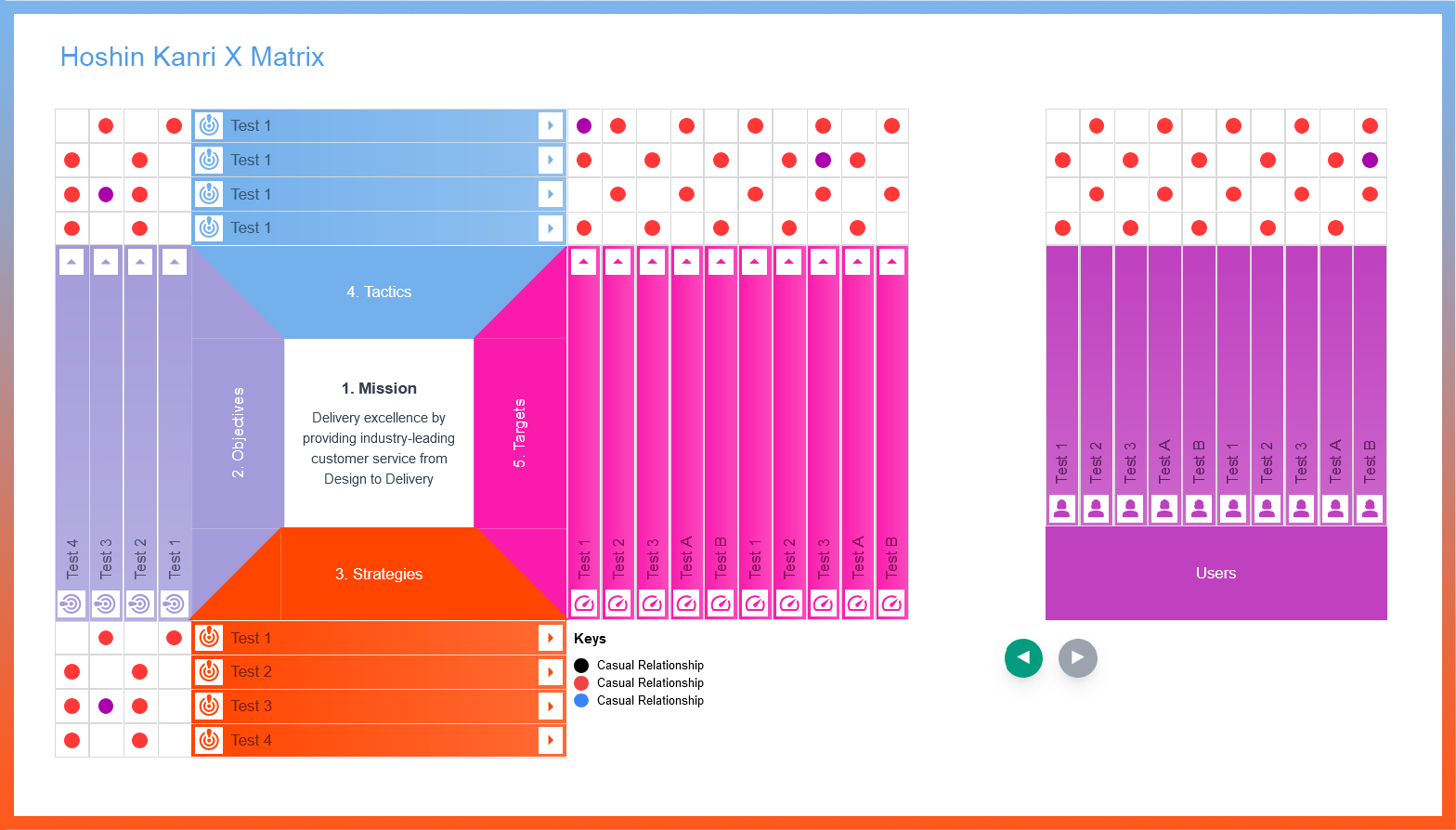
By using the Hoshin Kanri X Matrix, businesses can achieve clear alignment between their strategy and execution. It facilitates communication across departments, making it easier to track progress and adjust plans as necessary. The matrix emphasises a top-down and bottom-up approach to strategy deployment, ensuring that strategic initiatives are not only defined at the executive level but are also actionable and measurable across all levels of the organisation. This alignment fosters a culture of continuous improvement, ensuring that the business remains focused on its most important objectives.
SQCDL Visual Management Boards
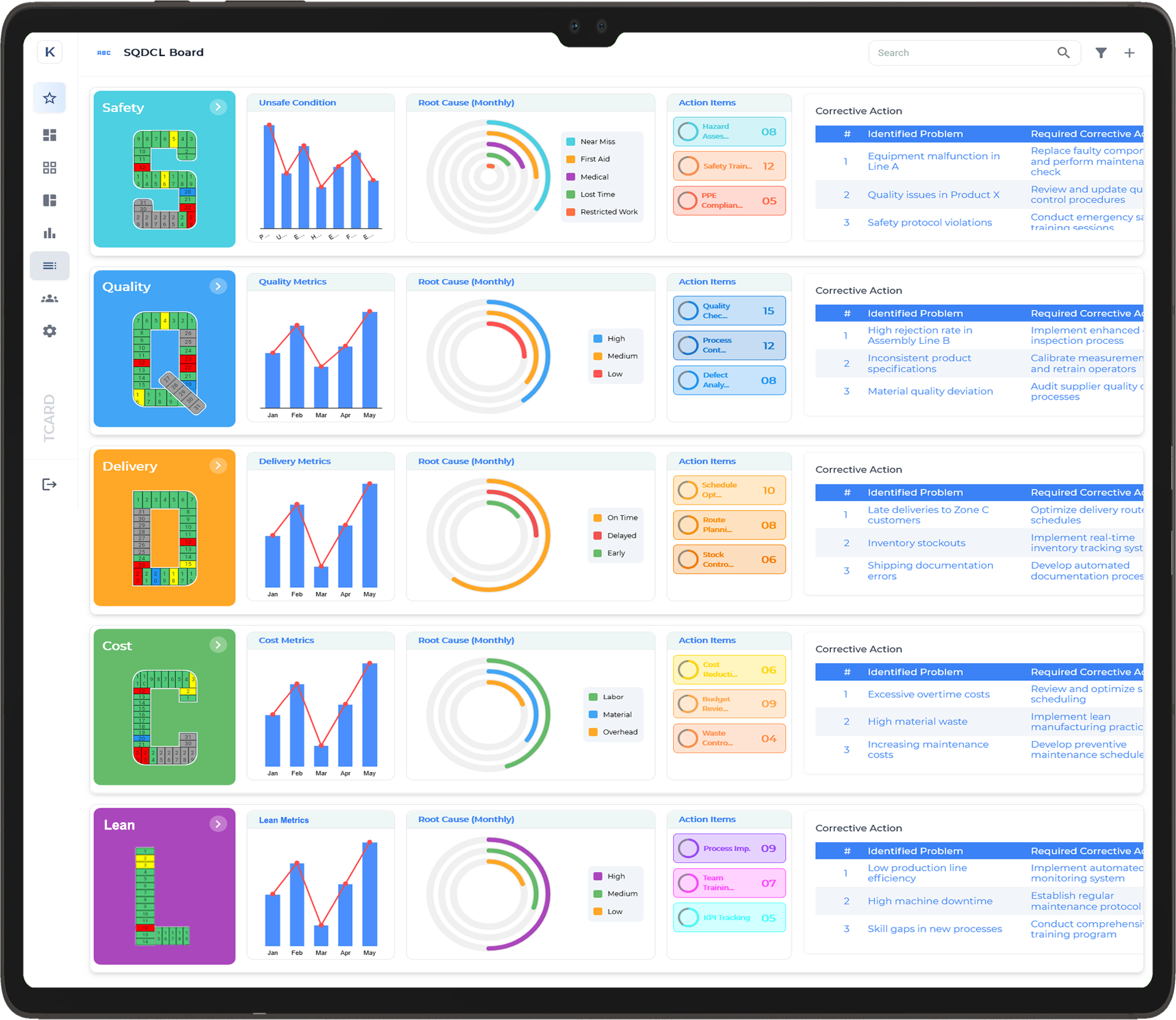
SQCDL Visual Management Boards are powerful tools used to monitor and improve performance across six key areas: Safety, Quality, Cost, Delivery, Lead Time, and People. These boards provide a visual representation of essential operational metrics, helping teams track progress in real time and identify potential issues before they escalate. By focusing on these six areas, SQCDL boards help organisations ensure that their processes are aligned with strategic goals, fostering a culture of accountability and continuous improvement.
The inclusion of Lead Time in SQCDL differentiates it from traditional SQCDP boards, emphasising the time efficiency of processes in addition to safety, quality, cost, and delivery. With real-time visibility into these critical metrics, teams can quickly make data-driven decisions, adjust strategies as needed, and maintain focus on operational goals. By leveraging SQCDL boards, businesses can enhance communication, streamline processes, and optimise performance, leading to improved productivity, customer satisfaction, and overall success.
SQDCM Visual Management Boards
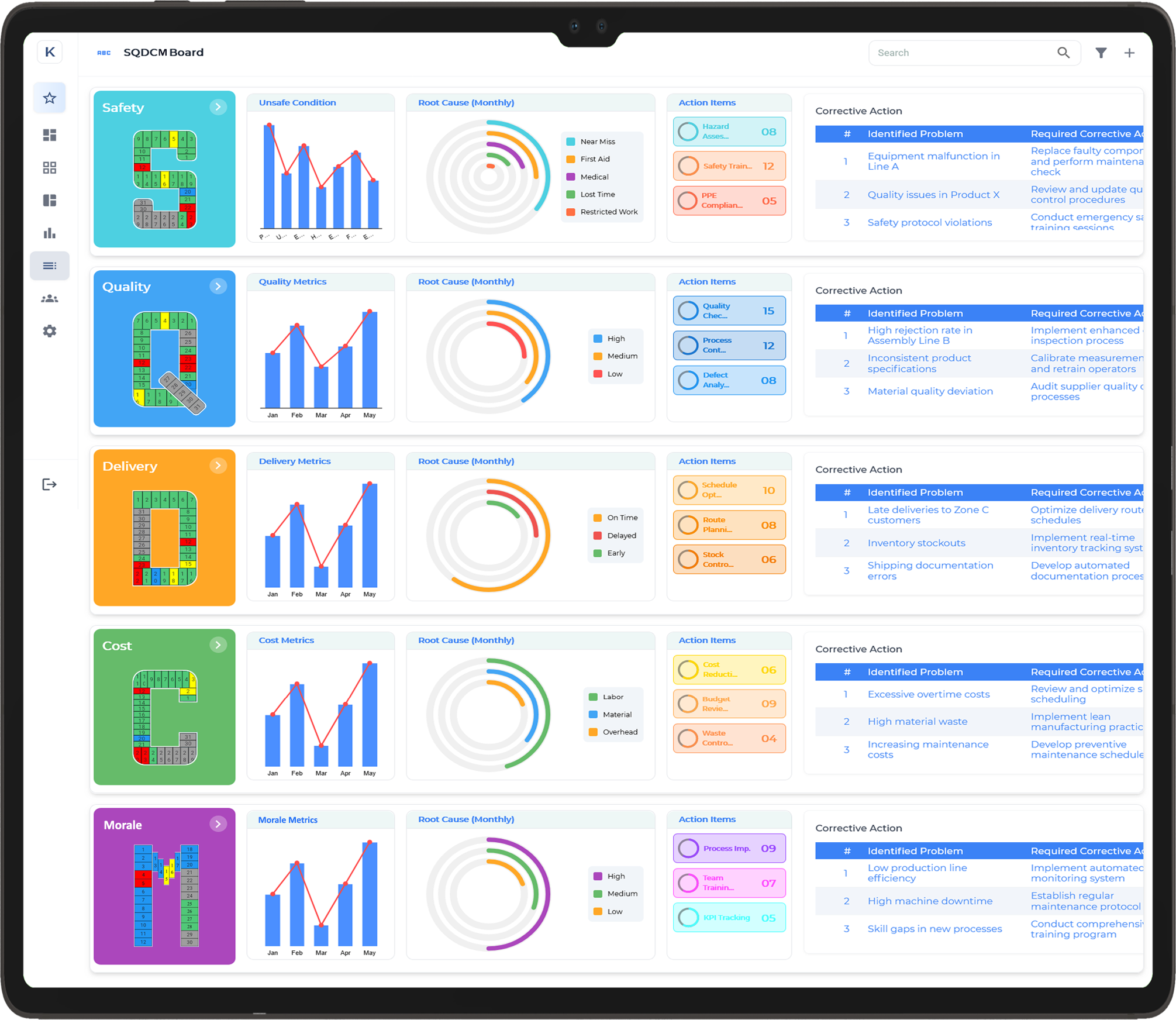
SQDCM Visual Management Boards are tools designed to help organisations track and improve performance across six key areas: Safety, Quality, Delivery, Cost, and Morale. These boards provide a visual representation of critical operational metrics, enabling teams to monitor progress, identify trends, and take corrective actions in real-time. The SQDCM framework ensures that all aspects of performance—safety, operational quality, cost efficiency, timely delivery, and employee morale—are consistently tracked and aligned with organisational goals. By using SQDCM boards, teams can quickly address issues and optimise processes to achieve better outcomes.
The inclusion of Morale in SQDCM boards highlights the importance of employee engagement and well-being in driving overall performance. High morale is crucial for productivity, innovation, and maintaining a positive work environment. By tracking morale alongside other key metrics like safety, quality, and cost, organisations can ensure that employee satisfaction is prioritised. This balanced approach leads to a more holistic view of operational success, fostering a culture of continuous improvement and creating a work environment where both processes and people thrive.
PQCDSM Visual Management Boards
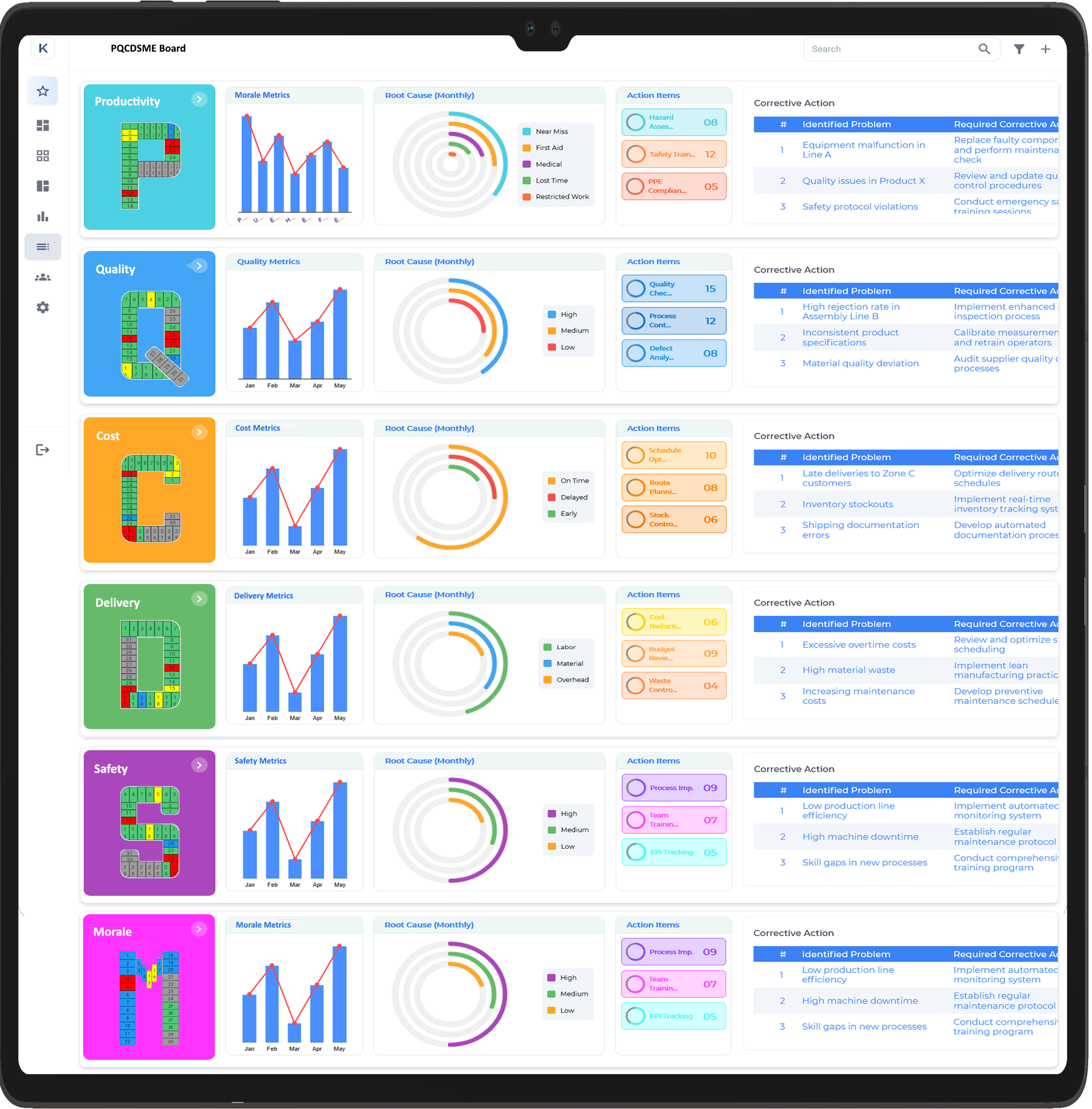
PQCDSM Visual Management Boards are tools used to track and optimise performance across seven key areas: Productivity, Quality, Cost, Delivery, Safety, Sustainability, and Morale. These boards provide a clear, visual representation of essential metrics, allowing teams to monitor real-time progress and identify areas for improvement. By focusing on these seven areas, PQCDSM boards ensure that organisations maintain a balance between operational efficiency, safety, environmental impact, and employee satisfaction. They help teams take proactive steps to address performance issues, enhance productivity, and align day-to-day operations with overall strategic goals.
The addition of Sustainability and Morale in PQCDSM boards underscores the importance of long-term environmental responsibility and employee well-being in achieving sustainable business success. Sustainability metrics track environmental impact, resource use, and compliance with green initiatives, while morale focuses on workforce engagement and job satisfaction. Together, these metrics provide a comprehensive view of performance, driving improvements not only in productivity and efficiency but also in creating a positive, sustainable work environment. This balanced approach supports both short-term gains and long-term business success.
SQDIP Visual Management Boards

SQDIP Visual Management Boards are tools used to monitor and improve performance across five key areas: Safety, Quality, Delivery, Inventory, and People. These boards visually display critical metrics, allowing teams to track progress in real-time and make immediate adjustments to improve efficiency. The SQDIP framework ensures that safety standards are met, quality is maintained, deliveries are timely, inventory levels are optimised, and employee performance is aligned with organisational goals. By providing a clear, accessible overview of these five metrics, SQDIP boards help teams stay focused on priorities and address challenges quickly.
The inclusion of Inventory and People in SQDIP boards highlights the importance of resource management and employee engagement in achieving operational success. Inventory tracking ensures that resources are managed efficiently, reducing waste and improving cost-effectiveness. The People component focuses on workforce engagement, skill development, and motivation, which are crucial for driving performance and fostering a positive work environment. By using SQDIP Visual Management Boards, organisations can ensure that all aspects of operations are aligned and optimised, leading to continuous improvement and long-term success.
Features of the Balanced Scorecard software
Balanced Scorecard software typically includes features that help organisations effectively implement and manage their strategic plans.
Customisable Dashboards
Balanced Scorecard software provides customisable dashboards that display key performance indicators (KPIs) across different perspectives, such as financial, customer, internal processes, and learning and growth. These dashboards allow users to easily track and analyse progress toward strategic goals in real-time.
Performance Tracking and Monitoring
The software offers robust tracking and monitoring tools that allow organisations to measure performance against defined objectives and targets. It automatically updates KPIs and provides visual alerts for areas that require attention, helping businesses stay on track with their strategy.
Goal Setting and Alignment
Balanced Scorecard software enables organisations to set and align long-term strategic goals with short-term objectives. It ensures that all teams and departments are working towards the same vision by aligning individual performance metrics with broader organisational goals.
Data Integration and Reporting
The software integrates with various data sources, allowing for seamless collection and analysis of performance data from across the organisation. It generates detailed reports, offering insights into performance trends, gaps, and areas for improvement, making it easier to make informed decisions.
Strategy Deployment and Execution
Balanced Scorecard software helps organisations deploy and execute strategies by tracking key initiatives and their progress. It allows for the creation of action plans linked to strategic objectives and ensures that tasks are completed efficiently and on time.
Collaboration and Communication Tools
The software often includes collaboration features such as shared workspaces, team communication tools, and performance review systems. These features ensure that team members stay informed, aligned, and engaged in the pursuit of common objectives.
Real-time Alerts and Notifications
Real-time notifications and alerts ensure that key stakeholders are promptly informed of performance issues or milestones. This helps teams react quickly to problems and make necessary adjustments to keep the organisation on course.
Forecasting and Predictive Analytics
Many Balanced Scorecard software platforms include forecasting and predictive analytics tools. These help organisations predict future performance trends based on historical data and plan strategies to achieve desired outcomes.
Drive Strategic Success with Balanced Scorecard Software!
"Balanced Scorecard Software helps organisations track and manage performance using metrics like FCIL, SQDC, SQDCP, SQCDL, SQDIP, QCDMS, and SQDCME across financial, quality, delivery, and safety dimensions."
Different Industries for Balanced Scorecard software (BSC)
Balanced Scorecard software can be tailored to meet the needs of various industries by focusing on industry-specific metrics and strategic goals. Here’s how it can be adapted for different sectors:
Healthcare
In healthcare, Balanced Scorecard software might emphasise patient outcomes, quality of care, operational efficiency, and financial performance. It can track metrics like patient satisfaction scores, treatment effectiveness, cost per patient, and compliance with regulatory standards.

Manufacturing
For manufacturing, the software can focus on production efficiency, quality control, cost management, and safety. Key metrics might include production downtime, defect rates, cost per unit, and adherence to safety protocols.

Retail
In retail, Balanced Scorecard software can track customer satisfaction, sales performance, inventory management, and operational efficiency. Metrics could include customer loyalty scores, sales per square foot, inventory turnover rates, and employee productivity.

Financial Services
For financial services, the software might emphasise client satisfaction, regulatory compliance, operational efficiency, and financial performance. Metrics could include client retention rates, compliance incident rates, cost-to-income ratios, and return on assets.

Education
In education, Balanced Scorecard software can focus on student outcomes, faculty performance, financial health, and operational efficiency. Metrics might include graduation rates, student satisfaction, funding levels, and administrative efficiency.

Construction
For construction companies, the software might focus on project delivery, cost management, safety, and client satisfaction. Metrics could include project completion rates, cost overruns, safety incident rates, and client feedback.
Balanced Scorecard
What is Balanced Scorecard Software?
Balanced Scorecard Software is a tool used to track and manage performance metrics across various business areas, such as financials, customer service, internal processes, and learning and growth. It helps organisations achieve their strategic goals and objectives by providing a clear, measurable overview of performance.
How does Balanced Scorecard Software work?
The software organises business objectives into four perspectives: Financial, Customer, Internal Processes, and Learning & Growth. Key performance indicators (KPIs) are tracked and displayed in real-time to evaluate how well the business is achieving its objectives.
What are the benefits of using Balanced Scorecard Software?
Benefits include better strategic alignment, improved decision-making, enhanced visibility into performance, more effective resource allocation, and the ability to track long-term goals and day-to-day operations simultaneously.
What is FCIL in Balanced Scorecard Software?
FCIL stands for Financial, Customer, Internal processes, and Learning & Growth perspectives, which are the key areas measured in a Balanced Scorecard framework to ensure a holistic view of performance.
What is SQDC in Balanced Scorecard Software?
SQDC refers to the four core metrics: Safety, Quality, Delivery, and Cost, commonly used in manufacturing environments to monitor operational efficiency and ensure that production processes are running smoothly.
How does SQDC apply to Balanced Scorecard Software?
SQDC is integrated into Balanced Scorecard Software to provide a detailed view of manufacturing performance. It tracks essential factors like safety, quality of output, timely delivery, and cost-efficiency to help businesses monitor and improve their processes.
What is SQDCP in Balanced Scorecard Software?
SQDCP extends SQDC by adding the "People" perspective, focusing on the workforce and human capital. It allows organisations to measure employee performance, engagement, and training, which are crucial for overall productivity and success.
What is SQCDL in Balanced Scorecard Software?
SQCDL stands for Safety, Quality, Cost, Delivery, and Lead Time. These metrics are often used to evaluate production efficiency and performance in real-time, helping manufacturers respond quickly to operational issues.
What is SQDIP in Balanced Scorecard Software?
SQDIP refers to the metrics Safety, Quality, Delivery, Inventory, and People. It offers a comprehensive approach to measure critical factors in manufacturing, including inventory control and workforce efficiency.
What is QCDMS in Balanced Scorecard Software?
QCDMS stands for Quality, Cost, Delivery, Manufacturing, and Safety. These performance indicators are used to evaluate and optimise manufacturing processes, ensuring high product quality, cost-efficiency, timely delivery, and safe operations.
What is SQDCME in Balanced Scorecard Software?
SQDCME includes Safety, Quality, Delivery, Cost, Morale, and Environment, and is often used to assess both operational and workplace culture factors. This framework helps businesses track both tangible and intangible aspects of performance.
How does Balanced Scorecard Software improve decision-making?
By providing real-time data and visual dashboards, Balanced Scorecard Software allows leaders to make informed, data-driven decisions that align with strategic goals and operational needs.
What are the key performance indicators (KPIs) in Balanced Scorecard Software?
KPIs in Balanced Scorecard Software vary depending on the business focus but typically include metrics such as financial performance, customer satisfaction, employee engagement, and operational efficiency.
Can Balanced Scorecard Software be customised for different industries?
Yes, most Balanced Scorecard Software solutions are customisable, allowing businesses in different industries to tailor the software to their specific goals, metrics, and workflows.
How does Balanced Scorecard Software help track performance?
The software provides real-time tracking of performance across all key perspectives (financial, customer, internal processes, learning & growth) using visual dashboards and metrics to easily assess whether strategic goals are being met.
Is Balanced Scorecard Software suitable for small businesses?
Yes, Balanced Scorecard Software is suitable for small businesses, providing them with a structured approach to managing growth and performance, even with limited resources.
How can Balanced Scorecard Software integrate with other systems?
Most Balanced Scorecard Software platforms allow integration with other business systems like ERP, CRM, and financial software to provide a comprehensive view of business performance.
Does Balanced Scorecard Software provide real-time analytics?
Yes, real-time analytics is one of the core features of Balanced Scorecard Software. It allows businesses to track their performance and adjust strategies promptly.
What features are included in Balanced Scorecard Software?
Key features include customisable KPIs, visual dashboards, integration with other business tools, real-time reporting, performance tracking, and the ability to manage both strategic and operational goals.
How can Balanced Scorecard Software improve strategic alignment?
By aligning goals and metrics across different areas of the organisation, Balanced Scorecard Software ensures that everyone is working toward the same objectives, improving overall strategic alignment.
What are the challenges of using Balanced Scorecard Software?
Challenges may include a steep learning curve for users, the time required to set up and customise the software, and the need for ongoing data management to ensure accuracy.
How can Balanced Scorecard Software enhance team collaboration?
By providing shared access to performance metrics, Balanced Scorecard Software fosters collaboration across teams, ensuring everyone is on the same page when it comes to achieving organisational goals.
Is training required to use Balanced Scorecard Software?
Yes, while the software is user-friendly, training is recommended to ensure teams are fully equipped to use all features effectively and to maximise the software's potential.
How does Balanced Scorecard Software help improve financial performance?
By tracking financial metrics such as revenue, profitability, and cost efficiency, Balanced Scorecard Software provides insights into financial performance and helps businesses make adjustments to optimise profits.
What should organisations consider before implementing Balanced Scorecard Software?
Organisations should assess their business needs, goals, available resources, and the required integrations with other systems before implementing Balanced Scorecard Software to ensure it will meet their specific objectives effectively.